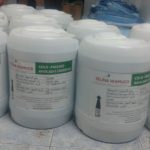 Many regions of Kenya, produce avocados, with the least being the Coast with 1 percent of the total production levels. However, most exports are of table fruits while the value addition sub-sector has only developed in recent years. The current problem with especially avocado oil processing in most of these areas is not lack of the fruits but insufficient capital to invest on hydraulic plants. A look at regional processing reveals that value addition is concentrated in Central and Nairobi. Many importers are familiar with the Mount Kenya region as the main source of the avocados that go on to make quality extra-virgin avocado oil. Indeed, Central province produces 39.6 percent of all local supplies of the fruit. There are also other areas with major reserves and cold pressing plants. One of the emerging ones is Kisii in the Western parts of the country. Thousands of local farmers in the county now rely on a single plant to process their fruits.
Many regions of Kenya, produce avocados, with the least being the Coast with 1 percent of the total production levels. However, most exports are of table fruits while the value addition sub-sector has only developed in recent years. The current problem with especially avocado oil processing in most of these areas is not lack of the fruits but insufficient capital to invest on hydraulic plants. A look at regional processing reveals that value addition is concentrated in Central and Nairobi. Many importers are familiar with the Mount Kenya region as the main source of the avocados that go on to make quality extra-virgin avocado oil. Indeed, Central province produces 39.6 percent of all local supplies of the fruit. There are also other areas with major reserves and cold pressing plants. One of the emerging ones is Kisii in the Western parts of the country. Thousands of local farmers in the county now rely on a single plant to process their fruits.
In Mount Kenya, avocado oil production takes place from regional plants as well as through post-harvest transfers to the nearby Nairobi pressing plants. The Hass and fuerte varieties are the main sources of the oil as they are widely grown on the windward side especially Meru and Embu. Hass represents 20 percent of the production levels while fuerte represents 80 percent. The main production method is hydraulic pressing for extra virgin, unrefined (virgin) and refined.
The other region is Kisii which is in Western Kenya, a province with 6 percent of total avocado production in the country. Starting 2014, the locals began the export their avocado oil through SMEs that assisted to find markets in far-flung countries such as Australia. The main variety that goes into processing is Hass, which local industries use to produce edible and pharmaceutical products. Small-scale avocado oil plants in the Kisii area are currently only able to produce about 15 to 20 tons on a daily basis. There are plans to boost the capacity to 350MT in coming years to keep up in pace with harvest saturation.
The main processing method is hydraulic pressing that involves the crushing of the fruits. This takes place after pitting the stone, which is followed by the passage of the pulp through the presser under relatively low temperatures. The resulting oil is usually crude and therefore unfiltered.
Various parts of the country have different capacities for production of avocados. The Rift Valley produces 8 percent of all avocados from Kenya. Processing plants are few but the main one is in Nakuru. In Western, avocado production capacity now is 6 percent while that of neighboring Nyanza is 34 percent. Eastern province has a capacity for 12 percent of production levels, especially in Meru. These are figures from the Ministry of Agriculture in 2010.
Therefore, there is still a gap in avocado value addition in Kenya that may improve with the rise of export companies. Avocado oil is competitive in terms of pricing in comparison with raw avocados and thus the reason many farmers are turning to the business. For instance, while the average price of a 4 kilogram carton of raw avocados is 8 Euro, 24 ounces of the oil is an average of 14 euros. Thus, Kenya has the potential of generating greater returns through the export of value added avocado than raw fruits.

